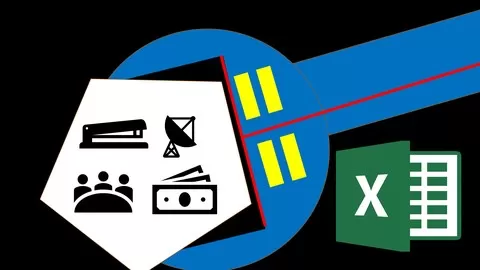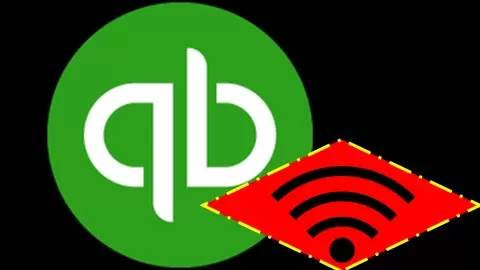Adjusting entries, posting adjusting entries to a worksheet,financial statement creation from an adjusted trial balance, and reversingentries will be covered in this course.
The adjusting entry process is a fundamental bookkeeping andaccounting process but is often the accounting process most misunderstood.
Because of the name of accounting adjusting entry process we areled to believe that we are adjusting errors made by the accounting department.In other words, we may get the idea that the adjusting process would not beneeded if the accounting department did their work perfectly through theperiod. This assumption of the adjusting process fixing errors is not theprimary purpose for the adjusting process.
The adjusting process is a necessary part of the accountingcycle and one that is built into the accounting system. In other words, we planfor the adjusting process, and part of the plan is to enter normal accountingtransactions in such a way that we will most easily be able to make adjustmentsat the end of the time period.
The adjusting process helps significantly with the understandingof accrual concepts because the adjusting process focuses on timingdifferences, on when revenue and expense should be recognized.
We enter adjusting entries as of the end of the period.Adjusting entries will have a balance sheet component and an income statementcomponent.
Once the adjusting entries are complete, we can use the adjustedtrial balance to create the financial statements, the balance sheet, the incomestatement, and the statement of equity. Who will we be learning from?
In addition to instructional video, this course will include downloadable
• Downloadable PDF Files
• Excel Practice Files
• Multiple Choice Practice Questions
• Short Calculation Practice Questions
• Discussion Questions
The PDF files allow us to download reference information we can use offline and as a guide to help us work through the material.
Excel practice files will be preformatted so that we can focus on the adjusting process and learning some of the basics of Excel, like addition, subtraction, and cell relationships.
Multiple choice example question helps us improve our test-taking skills by reducing the information into the size and format of multiple choice questions and discussing how to approach these questions.
Short calculation questions help us reduce problems that have some calculation down to a short format that could be used in multiple choice questions.
Discussion Question will provide an opportunity to discuss these topics with the instructor and other students, a process many students find very helpful because it allows us to see the topic from different viewpoints.
Who will we be learning from?
You will be learning from somebody who has technical experience in accounting concepts and in accounting software like QuickBooks, as well as experience teaching and putting together curriculum.
You will be learning from somebody who is a:
• CPA – Certified Public Accountant
• CGMA – Chartered Global Management Accountant
• Master of Science in Taxation
• CPS – Certifies Post-Secondary Instructor
• Curriculum Development Export
As a practicing CPA the instructor has worked with many technical accounting issues and helped work through them and discuss them with clients of all levels.
As a CPS and professor, the instructor has taught many accounting classes and worked with many students in the fields of accounting, business, and business applications.
The instructor also has a lot of experience designing courses and learning how students learn best and how to help students achieve their objectives. Experience designing technical courses has also benefit in being able to design a course in a logical fashion and deal with problems related to technical topics and the use of software like QuickBooks Pro.
Topics include the adjusting process, posting the adjusting entries to a worksheet, creation of the financial statements, and reversing entries.
The adjusting process takes place after normal business transaction have been entered. Adjusting entries help us better understand the accrual process because they deal with timing differences.
We will use a worksheet to record the adjusting process and discuss the components of the worksheet.
Once we have completed the adjusting process we will have an adjusted trial balance representing account balances that are as accurate as possible according to accrual accounting.
We will then use the adjusted trial balance to create the financial statements, converting the debit and credit format of the adjusted trial balance to the plus and minus format of the financial statements.
Please join us for Financial Accounting, Adjusting Entries & Financial Statements.
It will be great.
CPE (Continuing Professional Education)
Learning Objectives
1. List the components of the accounting cycle and identify where the adjusting journal entries fit into it.
2. List the four categories of adjusting journal entries
3. Describe prepaid expense adjusting journal entries and list examples
4. Explain what unearned revenue adjusting journal entries are and list examples
5. Define what accrued expense adjusting journal entries are and list examples
6. Describe what accrued revenue journal entries are and list examples
7. List and describe the general characteristics of adjusting journal entries
8. Compare adjusting journal entries to most journal entries that happen during the accounting cycle
9. Explain what an adjusting journal entries worksheet is and why it is useful
10. List the most common adjusting journal entries
11. Describe the characteristics of reversing entries and list common reversing entries
12. Describe how to create a balance sheet from an adjusted trial balance
13. Explain how to create an income statement form an adjusted trial balance
14. Explain how to create a statement of equity from an adjusted trial balance
15. Describe the relationship between the balance sheet, income statement, and statement of equity
For additional information, including refunds and complaints, please see Udemy Terms of Use, which is linked from the footer of this page.
For more information regarding administrative policies, please contact our support using the Help and Support link at the bottom of this page.











